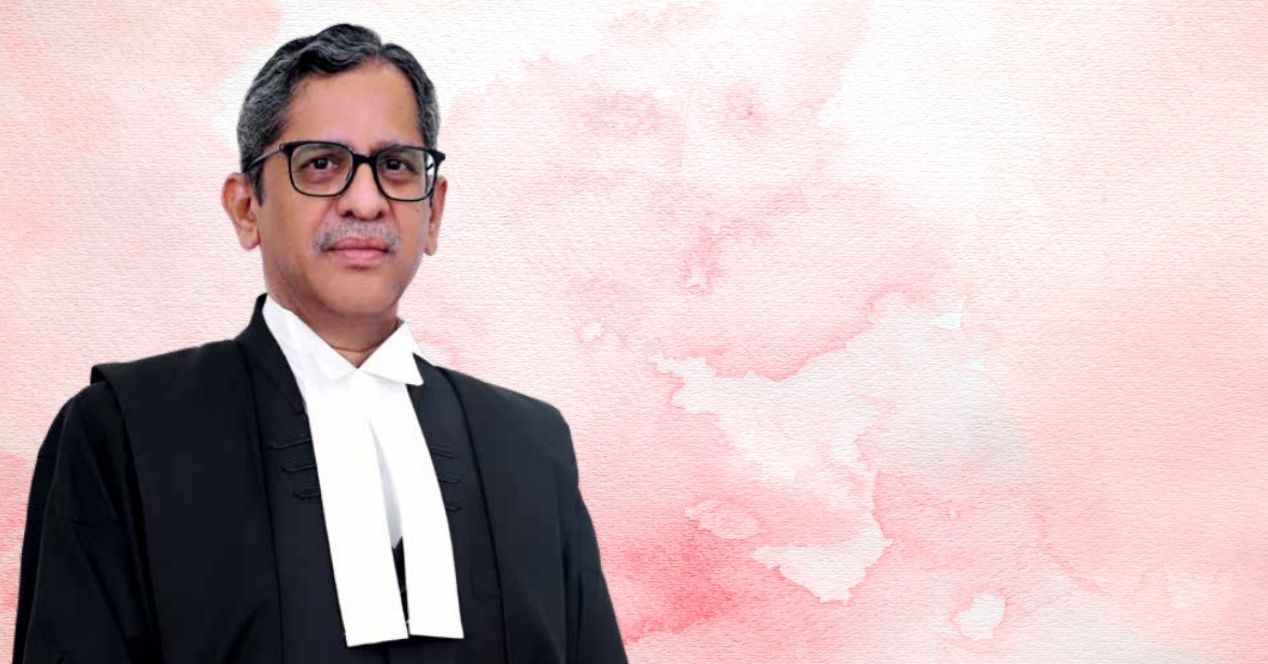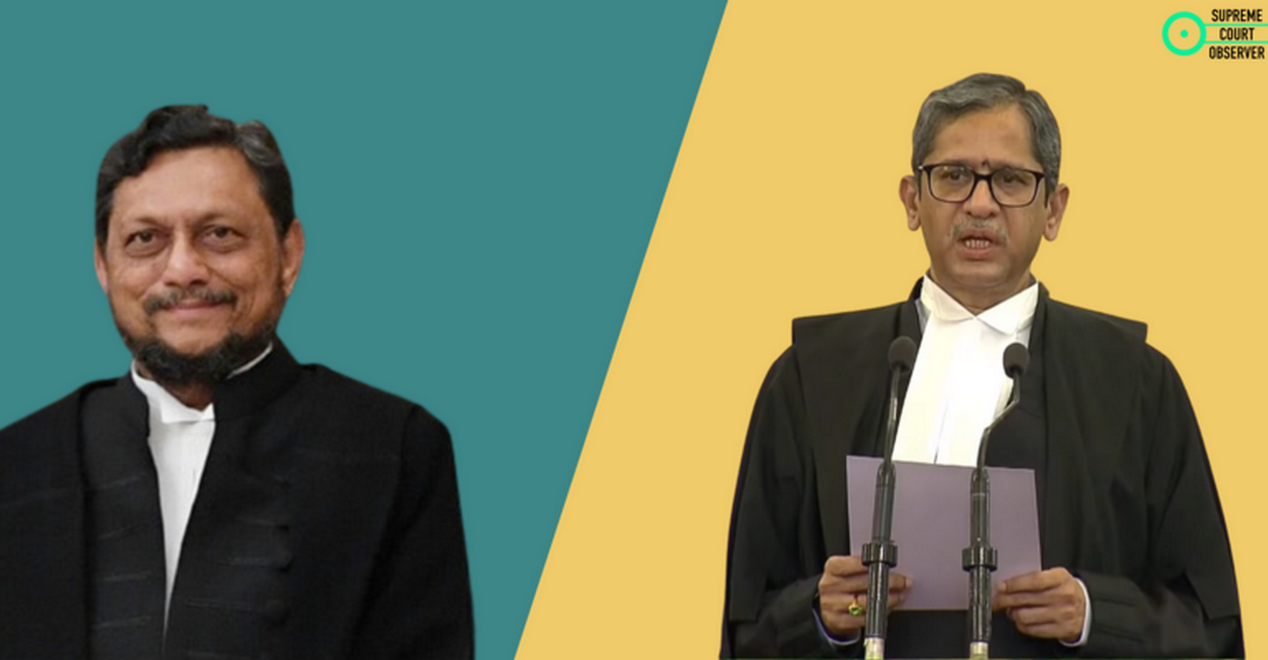Analysis
Chief Justice Ramana’s Tenure in Numbers
CJI Ramana's rate of authoring judgments only saw a negligible drop when he became Chief Justice of India.

Chief Justice of India (CJI) N.V. Ramana will retire on August 26th, 2022 after an 8-year tenure at the Supreme Court. Justice Ramana succeeded Former CJI S.A. Bobde on April 24th, 2021. His tenure as CJI began at the onset of the second wave of the COVID-19 pandemic. Coupled with a rising number of pending cases at the SC, it appeared that the majority of the challenges he was set to face would be administrative.
Assessing the tenure of any Judge at the SC has two components. On one hand, the substantive effect of the Judgments they author will shape how the Court deals with those issues in the future. On the other hand, their judicial output—the number of cases they heard and decided, and the distribution of the subject matter of their decisions—serves as a tool to quantitatively assess their tenure.
For former CJI’s, there is an added dimension to this quantitative analysis as they have additional responsibility of being the ‘master of the roster’. Was there an effect on the total number of pending cases in the SC while they served as Chief Justice? Here, we assess CJI Ramana’s tenure in numbers.
CJI Ramana Has Longest Tenure Among All Sitting Judges
Figure 1 displays the tenures of all sitting Supreme Court Judges alongside CJI Ramana at the time of his retirement. CJI Ramana, along with Justices D.Y. Chandrachud, U.U. Lalit, and Surya Kant, is projected to serve for eight years at the Supreme Court. CJI Ramana’s 8.5-year tenure is the longest among all sitting SC Judges, and far exceeds the average projected tenure of his contemporaries of 5.25 years.
CJI Ramana's Relatively Low Judicial Output
Figure 2 shows the total number of Judgments each sitting SC Judge has authored, along with the average number of Judgments each Judge has written per year. CJI Ramana has written 177 Judgments during his 8.5-year tenure. In contrast, his successor Justice U.U. Lalit has authored 297 Judgments during his tenure of 8 years so far, and Justice D.Y. Chandrachud has authored 494 Judgments in 6.25 years. Even Judges who were appointed well after CJI Ramana, like Justices M.R. Shah (420) and Hemant Gupta (199), have authored more Judgments than him.
Figure 3 shows the number of Benches CJI Ramana has been a part of and the number of Judgments he has authored during each year of his tenure. CJI Ramana has been a part of 666 Benches and authored 177 Judgments—26% of the cases he was a part of during his tenure. He authored an average of 21 Judgments per year. 2018 was an exception to CJI Ramana’s output, writing 61 judgments which accounted for 54% of the 113 cases for which he was a part of the Bench.
We have often seen that the number of judgments that an SC Judge writes falls when they are appointed as the Chief Justice. This may be attributed to the added administrative responsibilities they take on, including selecting the composition of benches and the cases assigned to them. CJI Ramana wrote 15 Judgments in 2021. After his appointment in April that year, his judgment output fell to 10 in 2022. While CJI Ramana does follow the typical CJI output trend, numbers indicate that the fall is not particularly notable in his case. Between February 17th, 2014, and December 31st, 2020, before his appointment as the Chief Justice, he authored an average of 22 Judgments a year. This is not significantly higher than his overall average of 21.
It must be noted that a Judge's output cannot solely be determined by the number of Judgments they have authored. It includes other factors, such as length of the judgment, depth of research, number and quality of citations, and reasoning, that cannot always be quantitatively defined.
What Subjects Did CJI Ramana Write About?
CJI Ramana wrote a vast majority of his Judgments in criminal matters (39%), a subject matter he specialised in as an advocate as well. Judgments in property matters (7%) and matters relating to Motor Vehicles Act, 1988 (7%) are distant seconds. However, his most notable decisions at the SC were delivered in other subject matters.
For instance, in November 2019, he wrote a Judgment on the scope of the Right to Information Act, 2005. In Central Public Information Officer v Subash Chandra Agarwal, the 5-Judge Constitution Bench held the Chief Justice of India was a ‘public authority’ as per the Right to Information Act, 2005. This made information on SC Judges and their assets publicly available through an RTI inquiry. However, Justice Ramana wrote a concurring opinion stressing that this information must not be used as a tool for surveillance of the Court, to maintain independence of the judiciary.
In January 2020, when the legality of the internet shutdown in Jammu & Kashmir was challenged at the SC in Anuradha Bhasin v Union of India, then Justice Ramana authored the Judgment for the 3-Judge Bench. The Court held that the constitutional right to Freedom of Expression included a person's right to express themselves through the internet. The Bench then ordered the restoration of internet services in Jammu & Kashmir.
Pendency During CJI Ramana's Tenure
Figure 5 shows the increase in the number of pending cases during CJI Ramana’s tenure as Chief Justice. He assumed the office of Chief Justice just as the second wave of COVID-19 was beginning in April 2021. He became India’s second ‘COVID-19 CJI’ after CJI Bobde retired.
Pendency at the SC rose at a less alarming rate under CJI Ramana than his predecessor—a 5% increase compared to 14% under CJI Bobde. However, the first wave of COVID came with unprecedented challenges for the SC under CJI Bobde as the Court had to devise a new system to deal with the lack of physical hearings. However, under CJI Ramana, the number of pending cases at the SC crossed the 70,000 mark for the first time since 1992 in January 2022. As of August 1st, 2022, there are 71,411 cases pending at the SC. This marks an increase in pendency by 3513 cases since the beginning of CJI Ramana’s tenure.
Further, none of the 53 pending Constitution Bench cases have been heard or decided during CJI Ramana’s tenure as Chief Justice of India. Two days before his retirement, the Court listed 25 Constitution Bench cases for hearing from August 29th, 2022 onwards. Some of these cases have been pending for over 3 decades. The Court will hear these cases under the stewardship of the soon-to-be Chief Justice, U.U. Lalit.




